Mammillaria bucareliensis erusamu cactus
₹949.00
Out of stock
Email when stock available
Mammillaria bucareliensis erusamu Origin and Habitat: This species is widespread throughout central Mexico in Hidalgo, Guerrero, Jalisco, México State, Aguascalientes, Tlaxcala, Veracruz, Zacatecas, Queretaro, Guanajuato, Hidalgo, Tamaulipas, Nuevo Leon, Puebla, San Luis Potosi, and México Federal District. Populations of this species are relatively numerous and abundant.
Altitude: 100-2,700 metres above sea level.
Habitat and ecology: It grows in dry rocky places in the open or (mainly) in xerophyllous vegetation. Despite the great abundance and diversity of cacti in Mexico, Mammillaria magnimamma is one of the few cacti species that has colonized barren lava fields. In parts of its range the species is threatened by local extraction for ornamental plant trade and by the expansion of urbanized areas.
Description: Mammillaria magnimamma is a perennial stem succulent solitary at first, later branching basally (or dichotomously) to form large mounds up to 50 cm in diameter (or more) barely rising above ground level. This species is very variable and has received many names. In particular the spines are of variable shape and length, occasionally they are very long (up to 5 cm long).
Stems: Flattened globose to globose, grey-green to dark blue-green, 10-13 cm in diameter and up to 30 cm tall.
Tubercles: Conic-pyramidal as long or longer than broad, about 10 mm tall, firm, four-sided but not sharply angled, with latex, flowering axils with dense white wool, especially when young.
Central: Spines usually absent.
Radial: (1-)2-5(-6), sometimes more, extremely variable, unequal, awl shaped, whitish to yellowish, with dark tips, 3-45 mm long, lower one longer up to 5 cm long, stronger than the others and more or less curving downward.
Flowers: Dirty white, creamy-yellow or tinged brown with reddish midveins, to deep purplish pink, 20-25 mm wide and long and in diameter.
Blooming season: Mid spring.
Fruits: Club shaped, dark purplish red, to 20 mm long, sticking straight out from the stem.
Seeds: Small brown.
Cultivation and Propagation: Mammillaria magnimamma is easy to cultivate, and makes an interesting specimens. Over time it will produce large clumps. It grows by producing offsets, and also by dichotomously dividing and doesn’t require any special treatment, but needs as much light as possible without burning the plant, to keep the stems compact. During the summer it is best to keep the plants outside where the temperature can rise to over 30° C with no harm to the plant, recommended for any collection that needs lots of light with ample airflow.
Growth rate: It is a small growing, but easily flowering species. It takes several years to offset, but once it starts it can fill a 40 cm pot in a few years given the best conditions.
Soils: Use a an open and free draining mineral compost with little organic matter (peat, humus) that allows therefore roots to breath (as it is rot prone).
Repotting: Repotting every 2-3 years. As it is especially prone to rot under-pot in a smaller container filled with very porous compost. Use shallow pot with good drainage.
Watering: It likes a winter’s rest and should be kept almost completely dry during the winter months, If the soil is allowed to be dry for too long root loss could follow but equally the same result would occur if the plants are both wet and cold. From March onwards the plant will begin to grow and watering should be increased gradually until late May when the plant should be in full growth. Water regularly during the summer so long as the plant pot is allowed to drain and not sit in a tray of water. During hot weather you may need to water the plants more frequently so long as the plant is actively growing. From late September watering should be reduced to force the plant to go in to a state of semi dormancy, by October you should be back in to the winter watering regime. Keep dry with ample airflow in winter. In the rest period no high atmospheric humidity!! Care must be taken with watering as they tends to become swollen and untidy in growth habit if given too much water and shade.
Be the first to review “Mammillaria bucareliensis erusamu cactus” Cancel reply
You must be logged in to post a review.








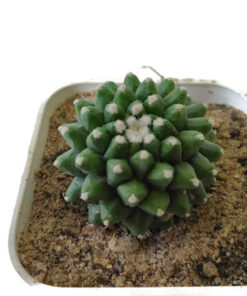




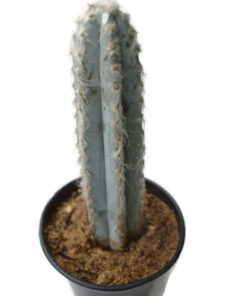

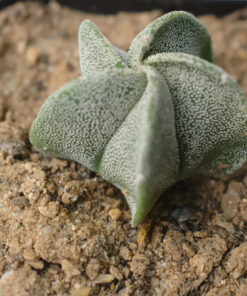

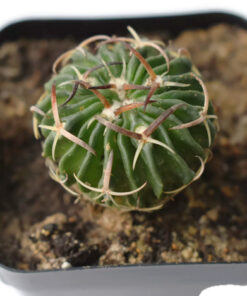

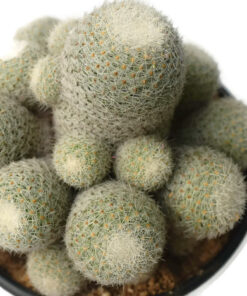

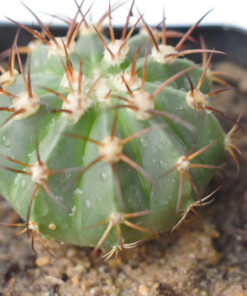

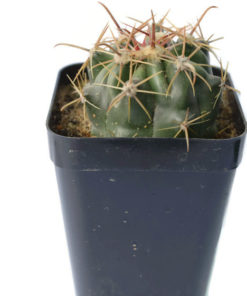



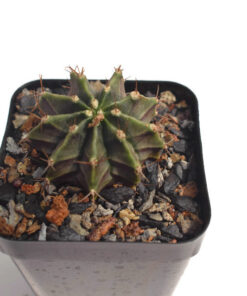

Reviews
There are no reviews yet.